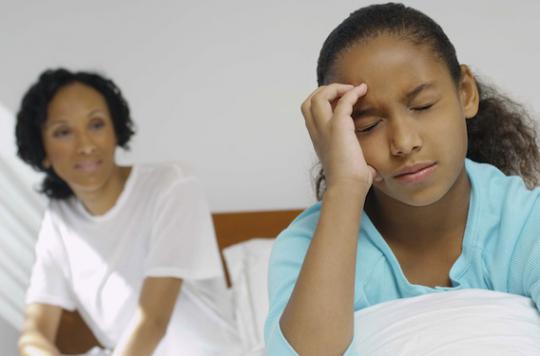By injecting a local anesthetic into a lymph node behind the nose, doctors have been able to reduce migraine attacks in children.

Surgical treatment for migraine may provide relief for some children and adolescents, suggests study presented this Sunday at the congress of the American Society for Interventional Radiology. Doctors at the Phoenix Children’s Hospital (United States) have indeed shown that this therapy, until now reserved for adults, is effective and safe in younger patients.
Between 3 and 10% of children are said to have migraine. These headaches are distinguished from those of adults by shorter attacks, a more frequent bilateral localization as well as pallor at the time of the attack. In these small migraine patients, treatment is based on both non-drug therapy to teach them how to manage stress as well as pain relievers. Depending on their age and the severity of the migraine, these treatments may be substantial.
But according to the radiologists in Phoenix, it is possible to reduce the drug intake with a short surgery. Guided by imaging, this intranasal technique involves “putting to sleep” the sphenopalatine ganglion, a bundle of nerve located in the nose and suspected of being involved in triggering migraine attacks. To do this, radiologists inject a local anesthetic, generally lidocaine, which allows this nervous circuit to “reset” and break the infernal cycle of migraine.
The pain subsides
Doctors in Phoenix tested this approach between February and November 2015 with 200 children aged 7 to 18 with severe migraines resistant to first-line treatments. In total, more than 310 procedures of about ten minutes each were performed. Within a quarter of an hour after the procedure, patients reported pain relief from 5.5 to 3.3 on a scale of 1 to 10.

“This treatment, performed on an outpatient basis by an interventional radiologist, provides rapid relief for children,” said Robin Kaye, head of the interventional radiology department at Phoenix Children’s Hospital and co-author of the study. By reducing their need for drugs, which can cause serious side effects, or by avoiding intravenous therapy that requires hospitalization, children will miss school less and can become children like everyone else ”.
An intervention that can be repeated
For the authors, this surgical option can improve the quality of life of these young patients. An alternative to drugs that is all the more interesting as it is carried out “easily, without causing complications” underlines Dr. Kaye. The latter adds that “the operation can be repeated if the migraine returns”.
At the previous congress, specialists from the Albany Medical Center and the State University of New York presented encouraging results in adults. The day after the administration of lidocaine, the pain was reduced by at least 4 points on a scale of 1 to 10. Improvement continued for the following 30 days.
.

















